
Humetro city tour
- text size
- Enlarge Text Size
- Shrinking font size
Gamcheon cultural village
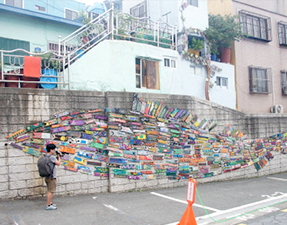
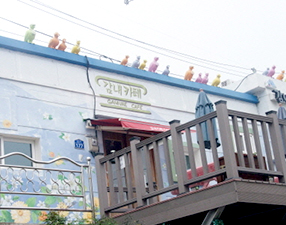
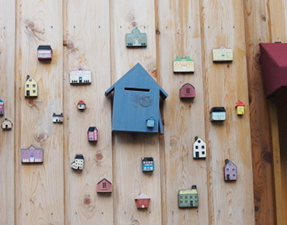
I didn’t know there would be so many tourists in Gamcheon. The small villages on the hill between Nampo-dong and Saga-gu were no more a residential area beside roads. Some Busan people don’t exactly know where it is, only knowing the village by name. One of my friends left Gamcheon where he had lived for 30 years tilted his head when I told him Gamcheon is now the Culture Village. What? Why? I mean, where? Gamcheon? This native of Gamcheon proves that this village has been hiding its attraction for a long time.
Maybe it would be the beginning of Gamcheon Culture Village when Japanese actor Kimura Takuya walked up Gamcheon hillside road for his movie . In the view filling the whole screen of , there were narrow stairs going up to the sky and the endless line of 1-story simple houses facing the sea and the sky on the hillside. The houses are the reason this place is called ‘Santorini of Busan’. The houses are well-organized on the stiff hill without shading each other toward the sea with beautifully painted walls in different colors. Even the colors that would not look good on other houses go with Gamcheon so well. Light pink, dark ping, lemon, bright yellow, magenta blue, dark blue-green... The houses blooming like flowers through a camera lens are the main characters who created Gamcheon as it is now. I guess some paint store owners have made this possible with their artistic sense.
Um, I think I need my house newly painted this time, yes, what do you think about lemon color? As bright as my neighbor, yes? Wow, madam, you know something about color. Do you like light pink? Of course, this is my imagination.
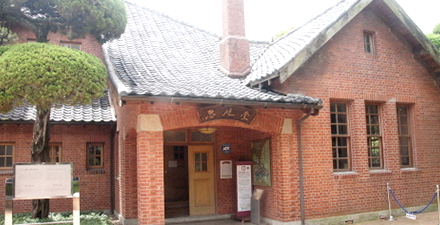
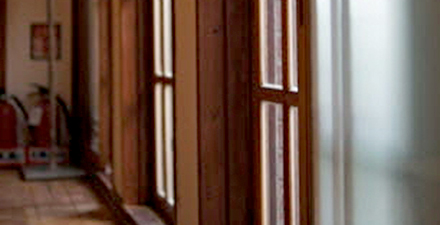
Visit Provisional Capital Memorial Hall getting off at line 1 Toseong station. It is marked on the map inside the station. While Busan was the provisional capital during the Korean War, this building was used as for the presidential residence. Because it was the governor’s residence in Gyeognam built in Japanese colonial era, it has the great points of the western, Japanese, and Korean styles. It was called Gyeongmudae before. President Lee Syngman stayed here, performing his duties and receiving national guests. It is interesting to look at the stuffs and documents exhibited on the hall behind, but this modern style building itself is already very attractive due to the unusual things you can find in every corner, including the decent fireplace, Japanese corridors and stairs connected to another room, or the ceramic toilet with the hand drawing design. The toilet is…… so pretty.
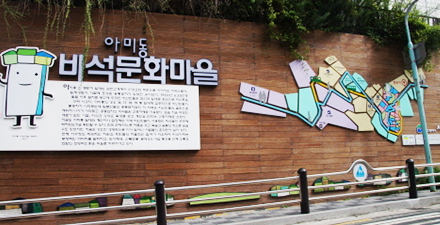
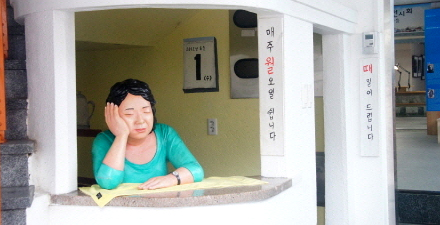
You can climb up to the top of Gamcheon mountain passing through Ami-dong from the memorial hall, but you’d better take a shuttle bus if you’re dating your lover since it is a very rough road. Everyone will point at the top of the mountain if you ask them where Gamcheon Culture Village is. A simple village map is on the big front wall of Gamcheon public parking lot on the entrance of the village. You can easily find a way without the map, but it is helpful for you to guess where you are as it is the simplest guide for the Culture Village and the Tombstone Village. The village begins in front of the KFCC ATM. Once you begin to walk looking around, you will marvel at each corner as if you were in a totally different world. The wall paintings in every margin of the walls let you know what beauty of space is. Everyone become a child once they visit this street. There are many kinds of stores and exhibition halls by remodeling cute houses. The well-organized signs on the both side of the quite long street go with the houses with their simple but beautiful design. In Gamcheon Culture Village, even the old couples who have been together for 10 or even 40 years blush their cheeks in pink.
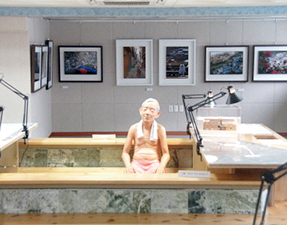
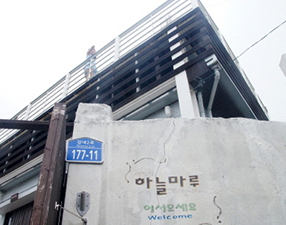

‘Gamnae Eoulteo’, used as a community center looking down Busan from Haneul Maru, is a place for modern art with the structure of a public bath. There is a small sculpture of a middle aged woman with closed eyes leaning her head on her arm as if she was dreaming, and beside her is the hand-written signs saying ‘Off on Sunday’ on the entrance. There is a huge bath tub reproduced inside the center with an old man enjoying the hot water with only a towel around his waste.
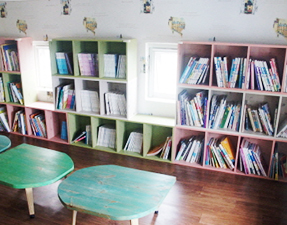
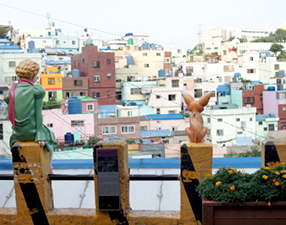
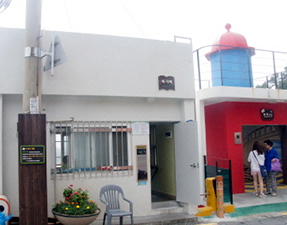
The exhibition hall and book cafe was remodeled from an empty house. Since it didn’t change the original structure, you can feel that the life of people is not far from art.
The installations, Dreaming fish, Good Morning, People and Birds, and House of Darkness: Constellation, etc, match so well as if they are the part of this colorful fairy tale-like street. The most popular one is artists Na In Joo’s ‘The Little Prince and the Desert Fox’ looking down Gamchoen, the sea and the sky as sitting on a cement rail. As if they exist there for children drawing on the floor alone, this small little prince and the desert fox create a deep impression.
The purity to ask a pilot he has just met to draw a sheep, innocence to look after a rose with 3 thorns covered in a glass ball, and the fox trained by the little prince reminded of his blond hair by a barley field. There is even space for one person to sit in between the prince and the fox. The visitors always take a picture here even when they have to stand in a long line. The Little Prince you read under a dimming light in your childhood. He hugs your shoulder and says ‘It was right for you to come here.’






